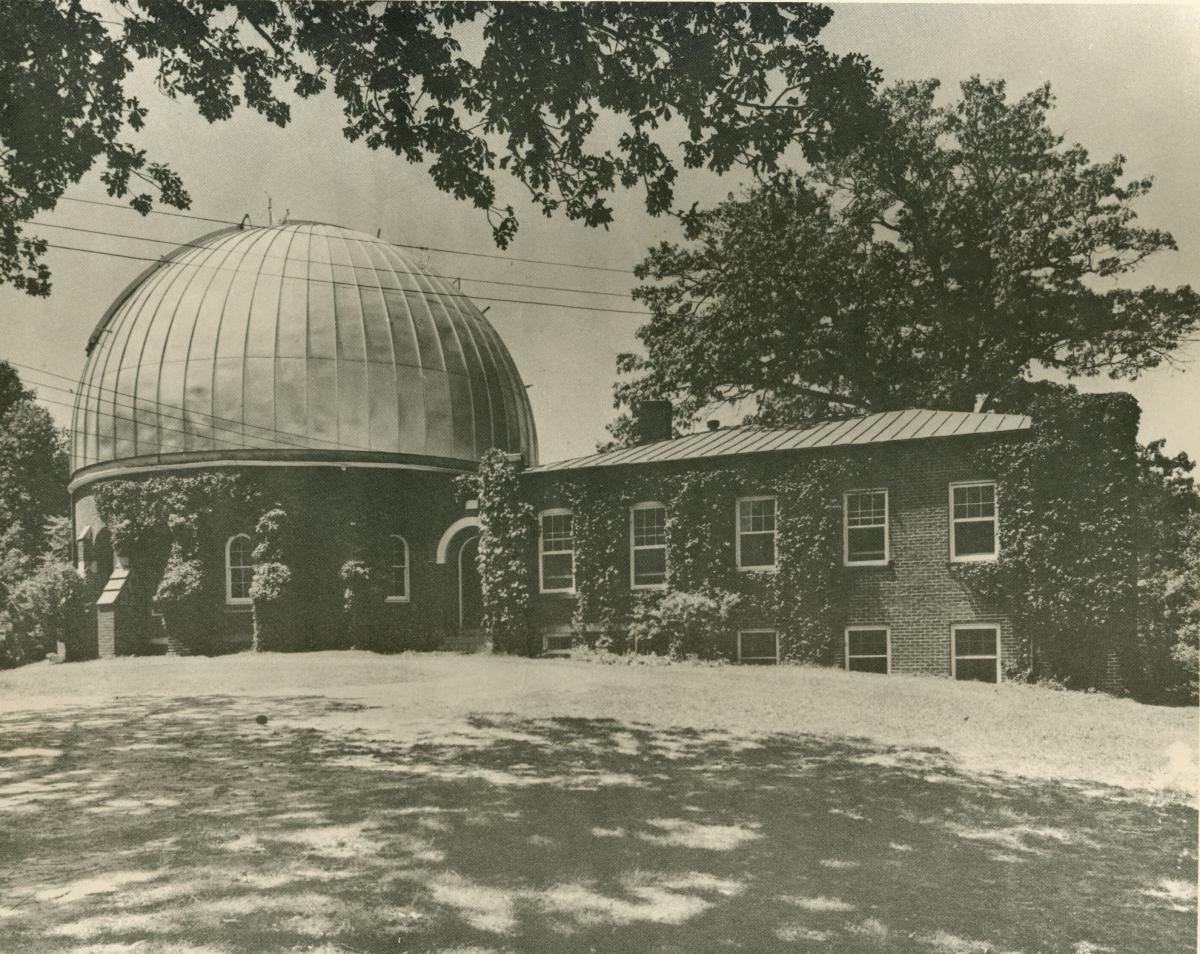


- Academics
-
Research
- Observatories
- Extragalactic Studies at UVA
- Planetary Science
- Virginia Institute of Theoretical Astronomy
- X-ray Astronomy and Clusters of Galaxies Group
- Near-Field Cosmology
- Exploding Stars and Time Domain Astronomy
- Galaxy Evolution and Cosmology Initiative (GECO)
- Virginia Initiatives on Cosmic Origins
- Outreach
- People
History of the Leander McCormick Observatory
When Thomas Jefferson designed the University of Virginia, he intended it to include an observatory and a center for astronomical study. While Jefferson did not see those plans come to fruition during his lifetime, in 1877 Leander J. McCormick donated a 26-inch telescope to the University, and an observatory, which now bears the name of its benefactor, was built to house it on Mount Jefferson. In addition, there have been smaller telescopes used for astronomical observations and other devices stored at the observatory including an impressive array of astrometric instruments. In over a century of operation, the McCormick Observatory and its publications have recorded countless observations and contributions to astronomical science. Its success has been due to the large number of talented astronomers to work at the University of Virginia, and the history of the Observatory is as much their story as it is that of the building that sits atop Mt. Jefferson.
Much of this research is thanks to the tireless work of Ricky Patterson, and in part by National Science Foundation CAREER Grant AST-97025.
- Early Astronomy at UVA: Thomas Jefferson and the days before the observatory
- Donation of the McCormick Observatory: The McCormick Family and the Clark Bros.
- Washington & Lee and the University of Virginia Telescope Debate: How the telescope almost ended up in Lexington
- The Building of the McCormick Observatory: The architecture and the Wilson Bros. of Philadelphia
- The McCormick Family: A very brief history
- Observatory Directors 1882-1979: The leaders of the Observatory
- Notable Astronomers and Staff: The individuals who made observation possible and pushed progress forward